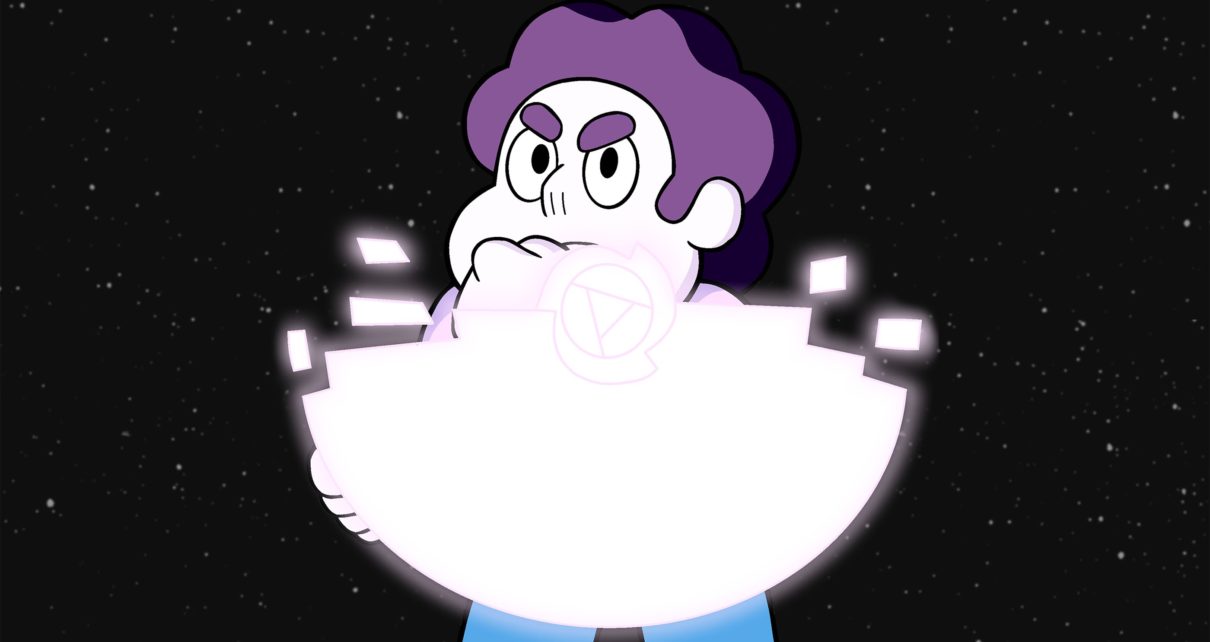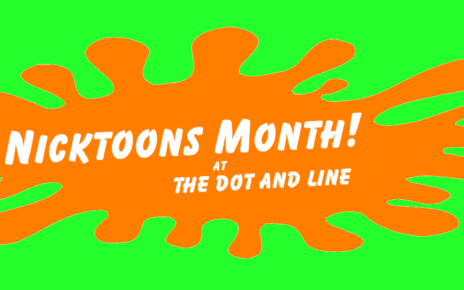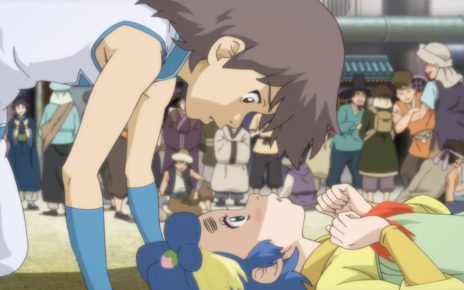Just like my annoying kid sister, Steven Universe, the television show, didn’t pop into this world fully formed and cool as hell. It took time for it to become a show I followed obsessively. Still, the seeds were all there in the show’s first 15 episodes — whether it’s after the eponymous main character sings about how he wants to be a “Giant Woman” or attempts to throw the Crystal Gems their first birthday parties after thousands of years. Those early episodes spend a good deal of time exposing viewers to how Steven relates to different aspects of living in the town of Beach City, introducing secondary characters and concepts, and showing Steven eating ice cream.
Then it happens.
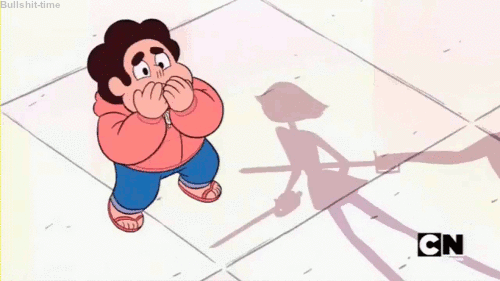
“Steven the Sword Fighter,” the sixteenth episode of Steven Universe, forces Steven to confront the mortality of one of his beloved guardians, Pearl, in a training session gone wrong. She doesn’t die, but it’s an emotionally fraught teaching moment for both the Gems and Steven, and one of the early signs that, despite the cutesy pastels and Super Mario clouds, you’re watching a show with stakes—a bildungsroman framed around a character meant for greatness, who happens to still be a preteen and in tune with his emotions almost to a fault. Despite those early episodes where he dreams of sword-fighting, when we think of the heroic ideal, Steven probably isn’t the first hero to come to mind. He’s not a testosterone-fueled, sure-of-himself, warrior champion. He ain’t no Beowulf.
Nonetheless, Steven channels his heroism in ways that relate to his feelings for, and relationships with, other people (and Gems). Steven is always growing — and his personality evolves dramatically from the kid traumatized by Pearl’s stabbing in that sword-training session to the one who has to actually stab another Gem in a much later episode — but one thing that never changes is his capacity for empathy. It defies machismo outright, and is one of the show’s deftest rhetorical tricks. Let’s look at how it pulls it off.

Steven carries a shield
And he’s in good company. Another Steven, Marvel’s Captain America calls on his Avengers by raising not a sword, but his shield, and at the character’s best, he’s also operating in defense of freedom, not in outright aggression. In an inspiring sequence of pages written by master Spider-Man scribe J. Michael Straczynski and penciled by Ron Garney, Captain America explains—in the middle of the divisive and much-lambasted superhero Civil War event in the mid-2000s—why he believes American heroes should be allowed to operate independently. Cap’s speech quotes Mark Twain at Spider-Man, again convincing Spidey that he’s on the side of the angels. It’s an elder statesman role Cap plays over and over again in the comics. (Read the moment to the left, click the link for the full monologue.) But Captain America and those who agree with him can only do that because they have shields: physically in the unbreakable vibranium defensive weapon he carries on his back (the first identifying symbol you see of him when Spider-Man approaches him in the page’s sequence), and legally in the protection that they seek from “superhuman registration.” Decking Hitler 70 years ago made a splash, but the shield and his star-spangled uniform are what make him iconic. Even the shield’s circular shape gives it a purity and elegance that distinguishes him from other heroes, as Alyssa Auriemma pointed out at The Mary Sue, who called out its feminine “humanity, almost maternal nature, and the urge to protect before throwing blows.”
Steven Universe also wears a star on his chest, his powers and weapons are similarly defensive, and he explicitly inherits them from his mother, Rose Quartz. In addition to the energy shield he can project and expand, he can heal his friends using his saliva (i.e. “kissing to make it better,” though, to be fair, he mostly licks his hands), float, and create protective bubbles he can use to survive in space and use to protect others as well. He also owns his mother’s sword and scabbard—which he does not use, but instead lends to his friend Connie, who uses them explicitly to protect him. He’s also accompanied by a giant pink lion named Lion, whose loyal defense of Steven is related to Rose as well. And like the best Captain America stories, Steven wins fights with ideas more than he does with violence.

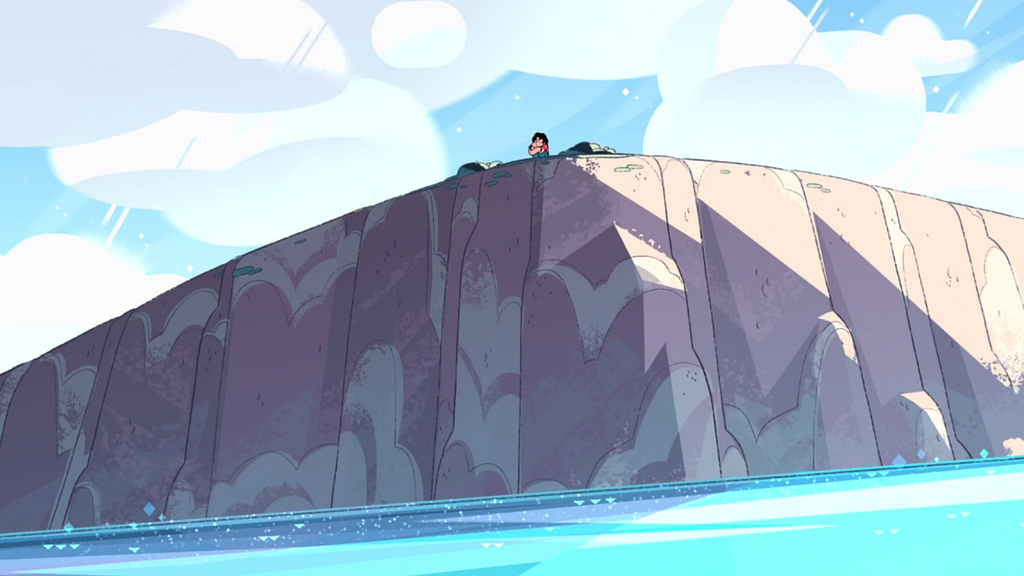
Steven bawls his eyes out when the going gets tough
Unpopular opinion: “Jail Break” is an amazing episode for many reasons—a cataclysmic season finale, an epic fight scene, an epic song, an epic reveal, a raw and accurate depiction of trauma—but its follow-up, “Full Disclosure,” is arguably even more poignant—and it’s just about the aftermath of the “Jail Break” disaster. Throughout the episode, Steven walks through the shattered remains of Beach City, agonizing over the fact that he was almost just abducted by aliens and only survived by crash-landing on the hill his house is based on. His dad, Greg, is losing it, hyper-ventilating to rock music in his van. And Steven’s phone won’t stop going off due to calls from his friend Connie, who’s just trying to see if he’s OK.
This leads, of course, to a song, and a scene of soul searching straight out of Raina Telgemeier’s Drama, wherein Steven attempts to process all the chaos he’s just gone through—first by deciding he needs to be alone, then by talking with secondary character Ronaldo who, without any context, basically tells him he needs to be alone to “brood.” The extra-wide shot of Steven on the cliff is one of the saddest of the episode, and a moment where its storytelling punches home just how messed up he is by the events of “Jail Break.” There’s even a noir-y visual gag where he closes the blinds of his house and squints.
Of course, none of that changes the fact that he still has to confront Connie. She keeps calling, and though he runs away and tries to tell her they can’t be friends anymore, his resolve lasts about 30 seconds in-person before he bawls his eyes out in front of her. He spills everything, he’s terrified that they won’t maintain their friendship, and he’s shown to be completely incapable of mustering the internal darkness it would require to dissociate from her and the rest of the world. Basically, Steven isn’t Batman, and he never could be.
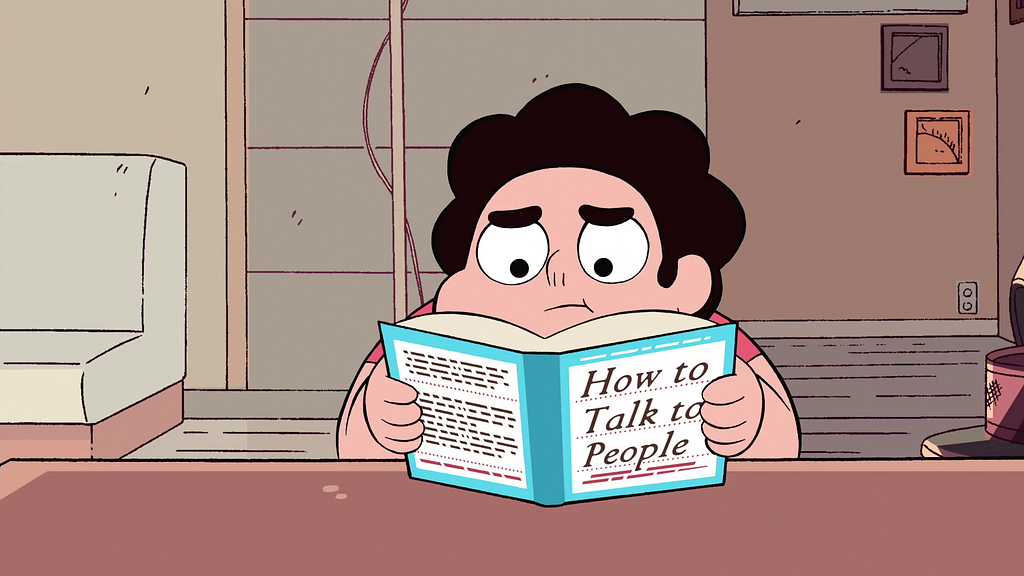
He also shouldn’t be. “Jail Break” and “Full Disclosure” ratchet up the ongoing conflict between the Gems and their Homeworld, but the core themes remain the same. Steven communicates how he feels, and often stresses the most about how to communicate his feelings to Connie, to the point where he very literally reads books on the matter. It’s what makes them a dynamic duo even if they aren’t on the same page 100 percent of the time. When that communication breaks down, they fix it by turning to alternate resources, which brings us to our next point.
Steven is mindful
The show made its stance on meditation clear in the episode “Mindful Education,” where Steven and Connie, in their fused form Stevonnie, uses the technique and Garnet’s help to get past both of their issues with guilt. Additionally, at least one teacher, Justin Whitaker, has written about the benefits of using Steven Universe to teach young students about mindfulness and meditation, specifically calling out how the characters sit in meditation posture during the episode’s song, “Here Comes a Thought,” with their hands in the dhyana mudra position. Moreover, if you know a little bit about Buddhism, it’s easy to see how in some ways, the four lead Gems call back to the Four Noble Truths:
- Pearl: Could represent the First Noble Truth, the Dukkha, which refers to “suffering,” “pain,” “sorrow”, “distress,” and “grief”—all of which Pearl exhibits more intensely for Rose Quartz, especially in her interactions with Steven, than any of the other Crystal Gems. Dukkha can also mean “incapable of satisfying,” which fits Pearl’s anal-retentive, striving personality to a tee.
- Amethyst: Could represent the Second Noble Truth, the Samudaya, which refers to desire, craving, and lust—which we see in Amethyst’s rambunctious personality, need for attention, and gluttony (even though as a Gem, she doesn’t need to eat). It’s also evident in the fact that she’s constantly “poofing” herself and not allowing herself the proper time to reform her body correctly. Samudaya encompasses different types of desires, as well as the universal problem of “letting go” of things; there’s a reason Amethyst is the hoarder of the team.
- Garnet: Could represent the Third Noble Truth, the Nirodha, the cessation of pain. Garnet is emotionally and physically the strongest of the three Gems raising Steven in the wake of Rose’s passing, as well Steven’s most patient teacher. Garnet has abandoned all delusions with literal and figurative clarity of vision—she can see into the future.
- Steven: Could represent the Fourth Noble Truth, the Magga, or a liberation of the Dukkha on the path to the Nirodha. It’s the knowledge that by following the Eightfold Path (or growing up, learning about your Gem heritage, and learning how to love and act as an adult) you can find true happiness and peace. Steven Universe is a show fixated on the positive development of its eponymous character, which most often results in his doing good for the sake of others.
Meanwhile, others have pointed to Rose Quartz as a Buddha figure. There’s so much iconography in the show, along with the stories told by the Gems, that positions her as a noble teacher and leader who has died or moved onto another plane. In stark contrast to the Diamond Authority of Homeworld—clearly inspired by the regimented Hindu caste system—Rose even confides sadly to Greg Universe in the “Greg the Babysitter” flashback:
“When a Gem is made, it’s for a reason. They burst out of the ground already knowing what they’re supposed to be, and that’s what they are. Forever. But you! You’re supposed to change. You’re never the same, even moment to moment. You’re allowed and expected to invent who you are. What an incredible power. The ability to grow up.”
It’s a line loaded with subtext. Rose points to (for her) the exclusively human beauty of bringing a child into the world while at the same time permitting that child to screw up. To grow, to learn, to fall in love, to try new experiences and take on new challenges every day. As a coming-of-age story, this is the crux of the narrative, but Steven isn’t just a boy coming of age. He’s Rose’s Patient Zero for a Gem that can shine and grow.
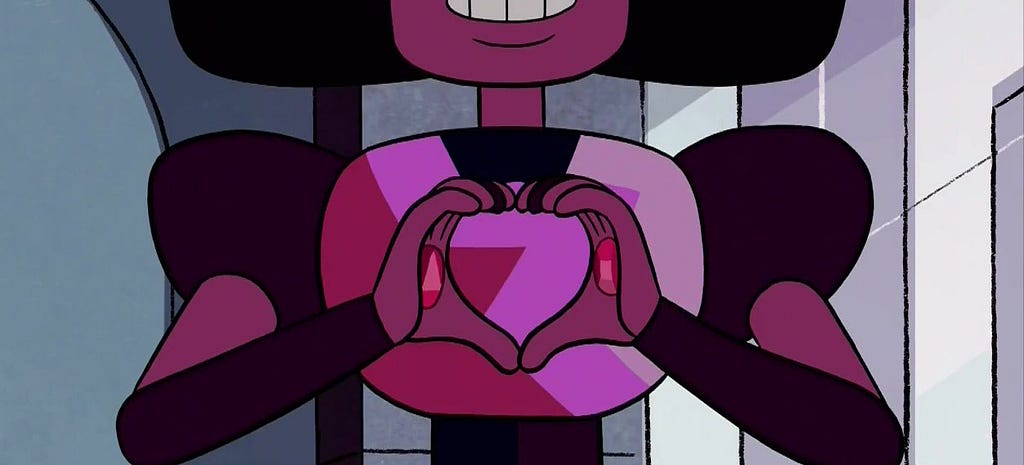
Steven is love is love is love is love is love is love is love
He’s also a child. Steven Universe is clearly a coming-of-age story, but it’s not one that will end with Steven as an adult or, more than likely, even as a teenager. It would feel almost antithetical to the show for his soul to harden, for him to be consumed with hormones, for him to go to college, because the show rides on his childhood as much as it does his sci-fi origin story. The earlier episodes play this up more—Steven has a hamburger backpack and can project a shield from his arm, or his reaction to his pants getting possessed might be, “That’s unusual!” in an episode that ends with him almost butt naked. All of the anime-referencing visual gags and Nintendo homages would fall flat on their ass if he weren’t still believably as obsessed with them as any other kid.
But that’s just another reason the show works. Unlike Dragon Ball Z and other shows Rebecca Sugar looked to for inspiration while crafting the show, Steven’s tragedies don’t corrupt or destroy him. He may be half-alien, but he’s not Gohan. He’s something altogether more human than most humans.
Steven should be a teacher
For many Americans in the last few weeks, the world just became a crushing sarlacc pit of bile and vitriol. The president-elect wants to deport 2–3 million people. LGBT suicide hotlines have seen a spike in calls. Racist attacks are happening across the country. Meanwhile, your liberal and conservative friends alike are probably eviscerating each other on your social media feeds—even the ones who might normally agree. Newspapers print letters arguing the internment of Japanese citizens was a “contribution to the war effort” while others pen arguments against empathy. In other parts of the world, cartoons are still used as propaganda.
We can be better than this garbage. We can believe in a world with wonder and kindness, where kids can make music and eat hot dogs and play video games and live with nonbinary queer folk and not have it made into a thing by everyone who doesn’t live with them. We can welcome our friends with open arms, because it’s what Steven would do, and because it feels good.
If we can do those things, we can be heroes too.

Thanks for reading The Dot and Line, where we talk about animation of all kinds. Don’t forget to ❤ this article and follow us on Twitter and Facebook.


